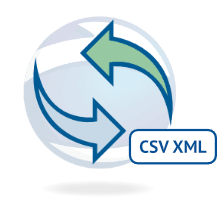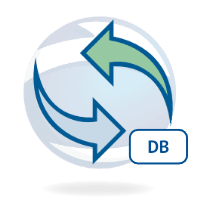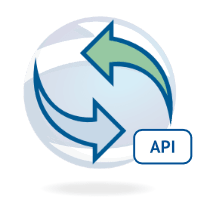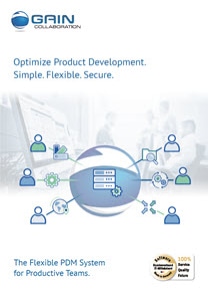
PDM ERP Integration:
4 ways for every requirement
Your options when connecting GAIN Collaboration with ERP systems or third-party systems:
JoinServer – Web service – Database coupling – ERP interface
A good decision:
Integrating PDM and ERP.

Data consistency
For fewer errors or inconsistencies
By linking the PDM and ERP systems, your product data is consistent in both systems. Changes in the PDM system (including updating a parts list) are automatically reported to your ERP system and updated there.

Efficiency
For optimised processes and time savings
Integration enables seamless data exchange between PDM and ERP systems. Manual data transfers or double data entry are a thing of the past.

Transparency
For better decisions
Only when your PDM system is connected to your ERP system is it possible to have a uniform view of your product information with its business processes. For example, current product development statuses or production plans.

Workflows
Automatically Up to Date
Automated workflows and notifications can be used to automatically transfer important information from the PDM to the ERP system. For example, to trigger procurement processes or production orders when a product is released.

Traceability
For more quality assurance
Linking product data with production, sales or purchasing makes possible traceability easier or more transparent.
Intelligent ERP PDM Integrations with
GAIN Collaboration: For better decisions and less time-to-market
Optimize processes – increase productivity and efficiency
- Gain valuable insights for improving your business processes and developing new products. For example, how you can use ERP and PDM to make your PLM concept into flow.
- Improve collaboration and communication between different departments in the company.
What is your initial situation?
- Your structures in the company: Should they remain in place? Are you planning optimizations? Which?
- Your software solutions: Which systems specifically do you plan to continue? Do you want to replace systems?
- Your processes: Which processes remain in place? What improvements are desired?
- Your budget: How high is your willingness to invest?
Your requirements determine the coupling type
Depending on the requirements with regard to desired processes or systems, the type and manner of coupling that is optimal for your company will result.
Experience shows that these can be worked out in a practicable way in one or more workshops and with the support of a guiding paper.
Below are a few questions, the answers to which will lead you step by step to the optimal coupling for your company:
- Do you want bidirectional data exchange?
- Would you like to be able to perform queries from one system to another? For example, query the stock level of an ERP article from the PDM system.
- Should (be able to) keep documents such as drawings in PDF format as attachments to articles in the ERP system?
- Welches System soll in Ihrem Unternehmen die Hoheit bei der Artikelanlage haben?
- Should part numbers be generated manually or automatically?
- Should a number range be defined for an automatic part number in the PDM system?
- Should articles be revisable in the ERP system? Or in other words: Do several versions of an article with attached bills of material exist in the ERP system? Or should only the version, the index change?







